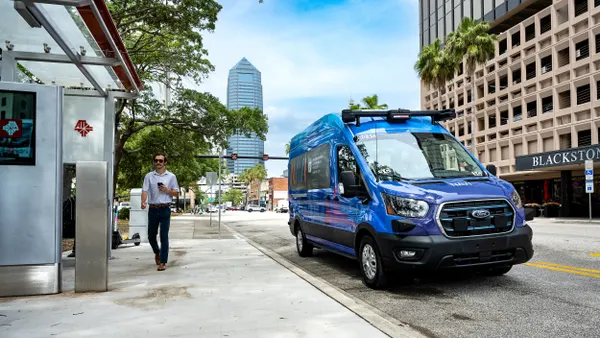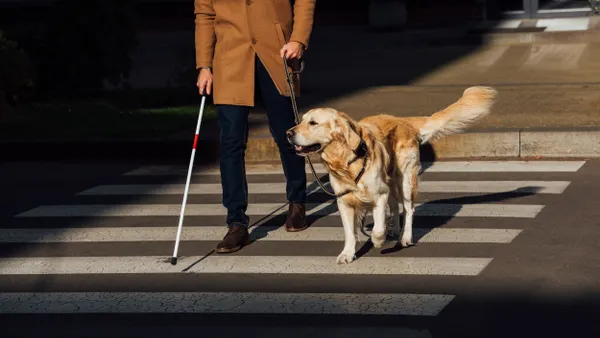Dive Brief:
- In its first quarterly safety report, Tesla says drivers using Autopilot — its semi-autonomous system — experience a lower rate of accidents or "crash-like events" than those driving without Autopilot, and compared to national data for all vehicles. Tesla says it will continue to update the numbers on a quarterly basis.
- According to Tesla’s report, the company has registered one accident or crash-like event every 3.34 million miles driven when Autopilot is engaged. Without Autopilot, Tesla cars had an accident or similar event every 1.92 million miles. According to National Highway Traffic Safety Administration (NHTSA) data cited by Tesla, the national figure is an automobile crash every 492,000 miles driven (that does not include near-accidents). The report does not include any information about the severity or type of crashes it measures, or how it defines a “crash-like event.”
- Just a day before Tesla issued its report, Consumer Reports rated the system the second-safest automated driving system, putting it behind Cadillac’s Super Cruise.
Dive Insight:
Tesla has dealt with questions of safety after a number of high-profile accidents involving the partially autonomous system, notably a fatal crash in Mountain View, CA in March. After that crash, Tesla said the driver appeared to have ignored multiple warnings to take control. There were also numerous reports of vehicles on Autopilot crashing into parked cars.
Tesla has long defended the safety of its Autopilot system without offering data to back it up, with CEO Elon Musk even lashing out at "inflammatory headlines" about accidents involving the system. "People are reading things in the press that cause them to use Autopilot less; that makes it dangerous for our customers," he said on an earnings call in May. "That's not cool." The new data may not do much to quell those concerns, since most competitors do not measure safety in the same per-miles-driven way. As The Verge points out, most companies report how often drivers disengage the system, a metric of how comfortable drivers are.
Even though driver assist programs are meant to improve safety and get drivers used to fully autonomous systems, there are significant safety questions. A report from the Insurance Institute for Highway Safety in August warned that some driver assist systems can actually create problems by not staying in lanes or following other cars off the road and cautioned that automakers be cognizant of the "trade-offs inherent in automated assistance."
In its safety assessment, Consumer Reports said it was incumbent on automakers to warn buyers about how to properly use assist systems and not become too dependent on them for situations the cars couldn't handle. "The best systems balance capability with safeguards — making driving easier and less stressful in the right situations," said Jake Fisher, director of auto testing at Consumer Reports. "Without proper safeguards, over-reliance on the system is too easy, which puts drivers at risk.”









